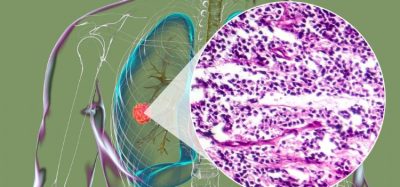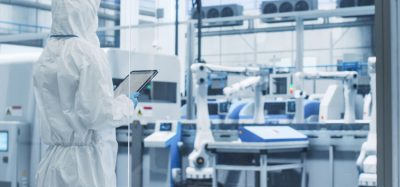Kyowa Kirin: Creating opportunities from challenges
Posted: 9 January 2018 | Dr Masashi Miyamoto - Kyowa Hakko Kirin | No comments yet
Dr Masashi Miyamoto, Director of the Board, Managing Executive Officer, Director of Corporate Strategy & Planning Department at Kyowa Hakko Kirin, explains his company’s five-year mid-term plan (2016-2020) to become a global specialty pharmaceutical company, and other significant initiatives…
What would you say have been the most significant developments in the pharmaceutical industry over the past 21 years?
For Kyowa Hakko Kirin, as a global specialty pharmaceutical company with strengths in antibody engineering technology, the most significant development has been the advancement of many biotechnologies along with the establishment of many kinds of biologics – especially therapeutic antibodies.
How has Kyowa Hakko Kirin evolved to meet these challenges?
Kyowa Hakko Kirin, as a combination of two companies with unique biotechnologies, has displayed a good synergy of these technologies which has led to a robust pipeline. In addition, the company has mid-term plans to deepen the development of therapeutic antibodies, small molecule drugs, nucleic acid drugs and regenerative therapeutics.
[insert_php] if ( zmember_valid_subscription() ) { echo ‘
DOWNLOAD THE ENTIRE 21st ANNIVERSARY SUPPLEMENT NOW
‘ ; } else { echo ‘
‘; } [/insert_php]
Looking ahead to the next few years, what do you think are likely to be the main opportunities and challenges affecting the industry?
We believe that the following three areas represent the main challenges:
- The fact that the probability of success in new drug development is lessening, and development costs are increasing
- Measures for health cost containment are being reinforced globally
- Medical needs are becoming fragmented and diversified.
- However, we also consider these challenges, especially the last one, as opportunities – a reason to provide solutions that respond to various medical needs by making use of Kyowa Kirin’s various business bases.
How is Kyowa Hakko Kirin preparing for these developments?
Kyowa Hakko Kirin has set its five-year midterm plan (2016-2020) to become a global specialty pharmaceutical company, with a specific focus on the following four strategic pillars:
- Improving competitiveness through the launch of global products, and establishing a globalised organisation and sales network
- Creating innovation at a higher level by combining innovative technologies with deep insights into our four disease areas – nephrology, oncology, immunology and allergy and the central nervous system
- Improving business processes to make the company’s asset management process more efficient and ensure the cash flow for aggressive and strategic investments
- Contributing to the health and wellbeing of people by providing innovative new drugs and biosimilars that respond to various medical needs.
What would you say has been your company’s outstanding achievement (or achievements) of recent years, and what impact has this had on patients and potentially the industry in general?
Kyowa Hakko Kirin has been maintaining a robust pipeline, launching products at a steady pace and executing successful overseas business projects. Among these achievements, two stand out:
- The use of Potelligent to produce practical real-life results. Potelligent is an antibody engineering technology, which has given birth to two products – mogamulizumab (Potelligeo in Japan) and benralizumab (licensed out to AstraZeneca)
- The acquisition six years ago of ProStrakan, absorbed as a whollyowned subsidiary named Kyowa Kirin International, headquartered in Scotland. The company is able to provide Kyowa Kirin’s healthcare solutions to patients worldwide.
Successful innovations in pharma are likely to increasingly rely on partnerships and collaborations between manufacturers suppliers, academics, and a whole range of other companies and organisations. What do you look for in these relationships, and can you give an example of one that has worked particularly well for Kyowa Hakko Kirin?
One of our company’s policies is to create innovation through partnerships and collaborations, looking for a higher probability of success and to accelerate new drug development. The discovery of mogamulizumab is one good example.
As early as 1996, Kyowa Hakko Kirin initiated an antibody creation co-study with many institutes including the University of Tokyo, which managed to create the anti-CCR4 antibody. Later – in 1999 – Potelligent, an antibody engineering technology, was successfully developed within the company. Kyowa Kirin continued with co-studies with more institutes – and mogamulizumab, our first therapeutic antibody, was born.
Kyowa Hakko Kirin profile
Kyowa Kirin was established in 1949 – its present company name having changed from Kyowa Hakko Kogyo Co after its merger with Kirin Pharma Company in 2008. It is a global specialty pharmaceutical group committed to innovative drug discovery driven by state-of-the-art technologies. Kyowa Kirin focuses on creating new values in four therapeutic areas: nephrology, oncology, immunology/allergy and the central nervous system. Over 5,000 employees across Asia, America and Europe champion the interests of patients and their caregivers in discovering solutions wherever there are unmet medical needs. Kyowa Kirin Group’s consolidated sales (pharmaceutical and biochemical business included) in 2016 were \343,019m.









